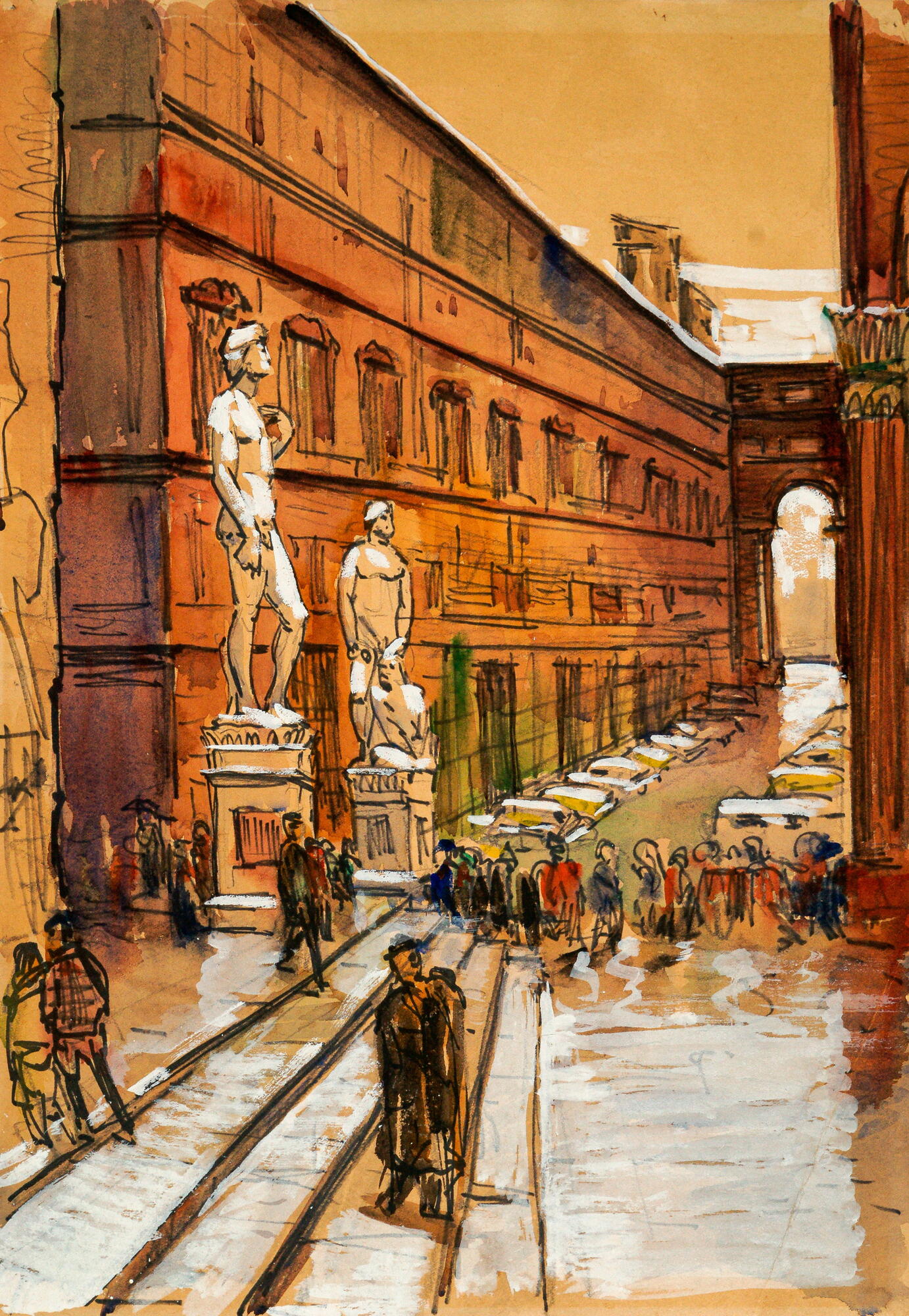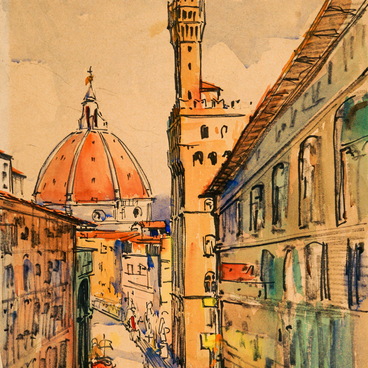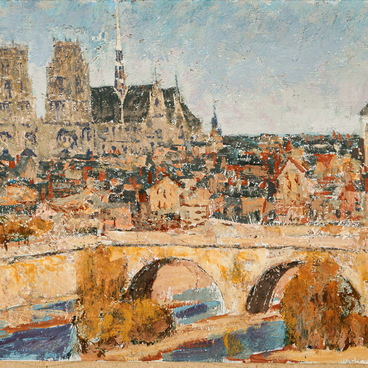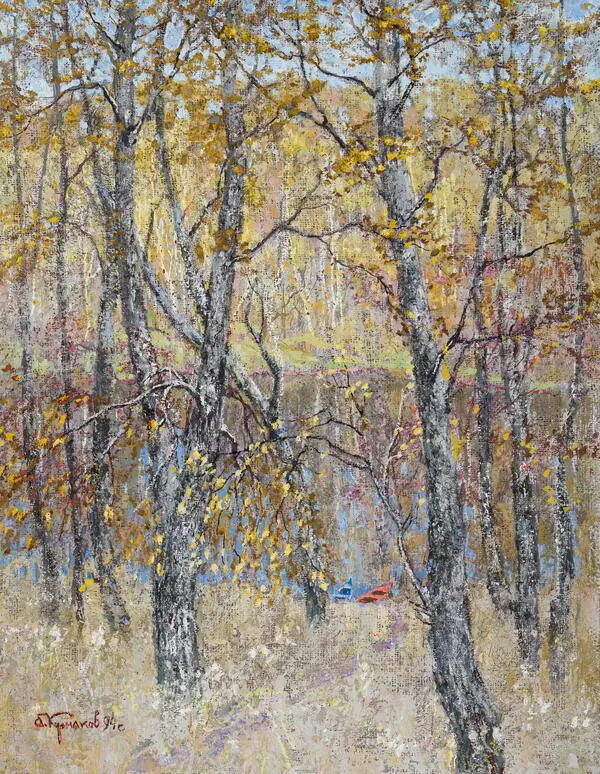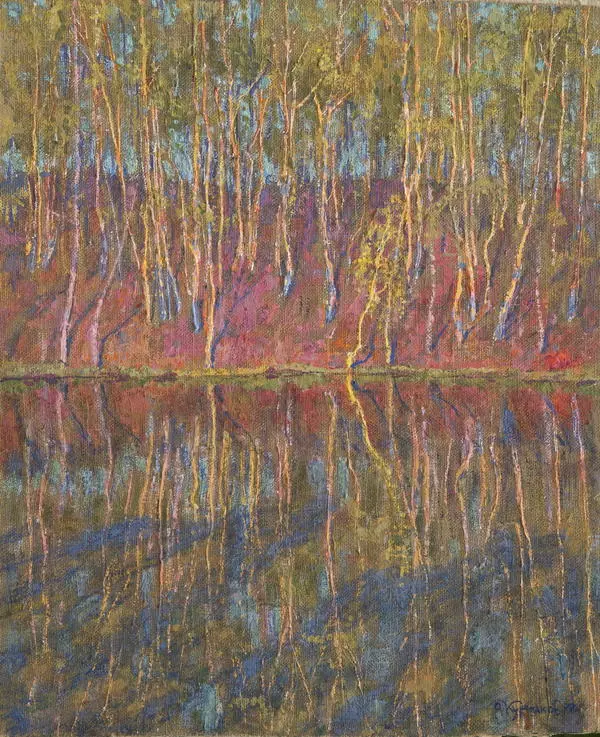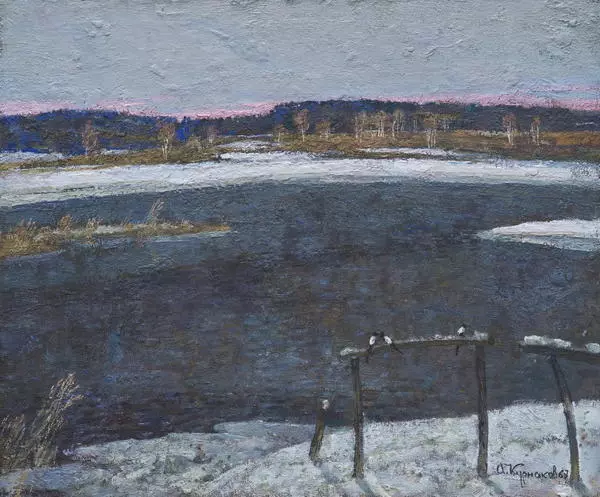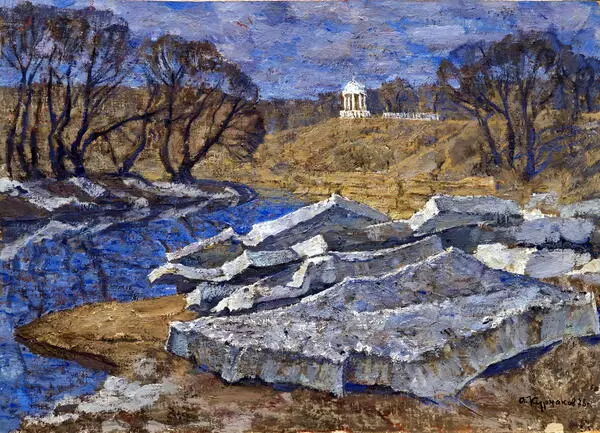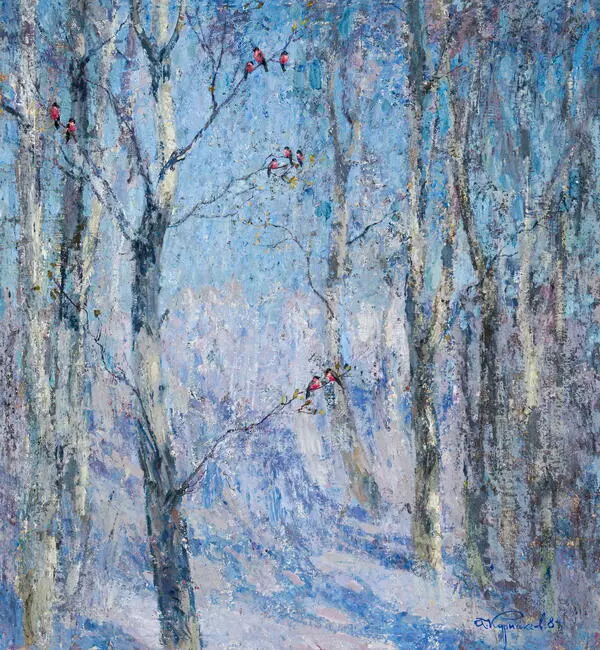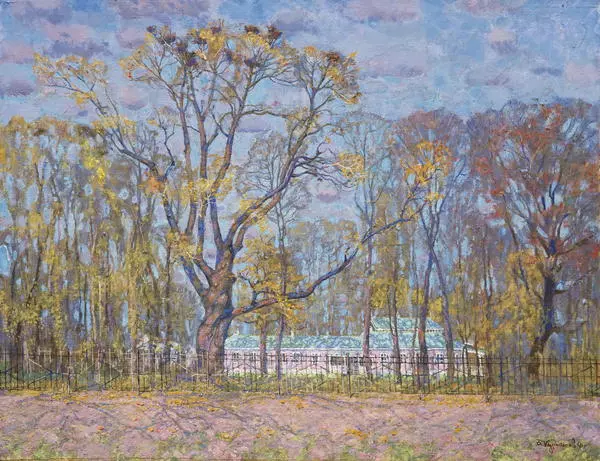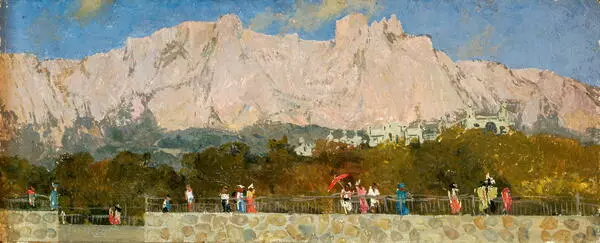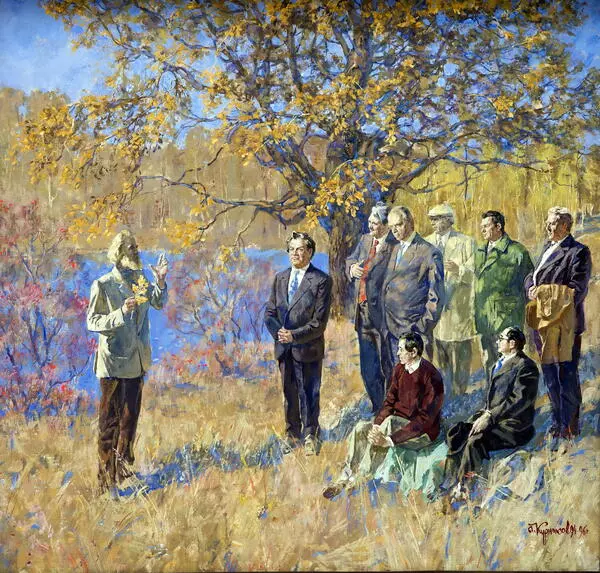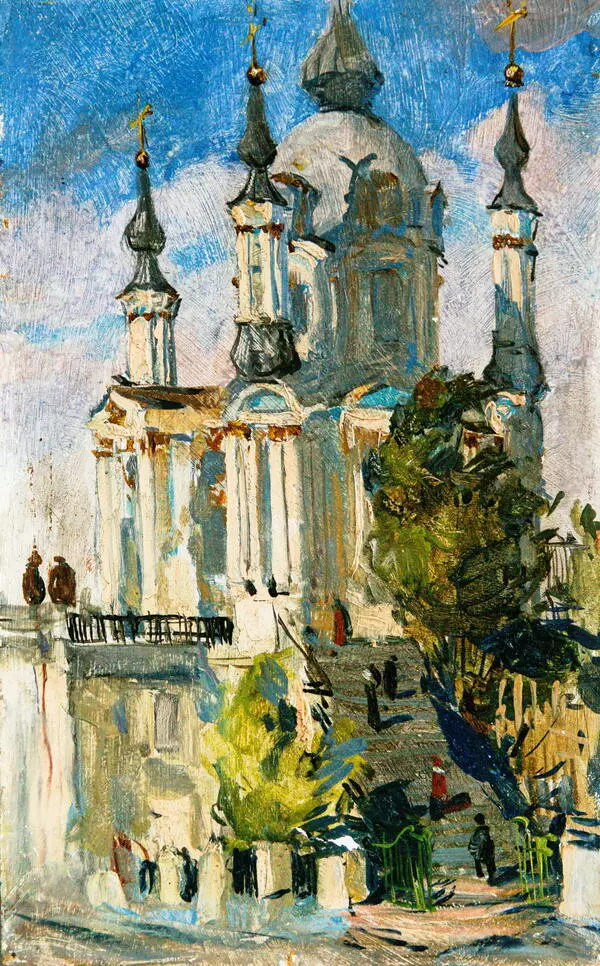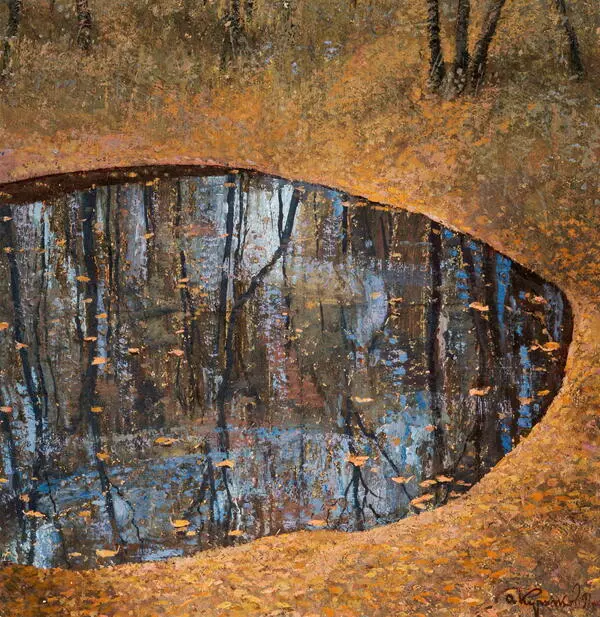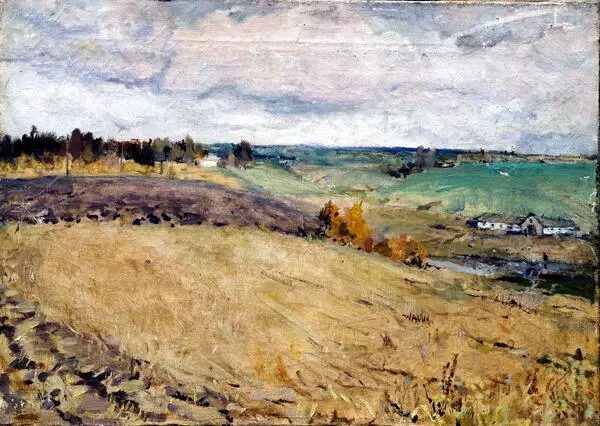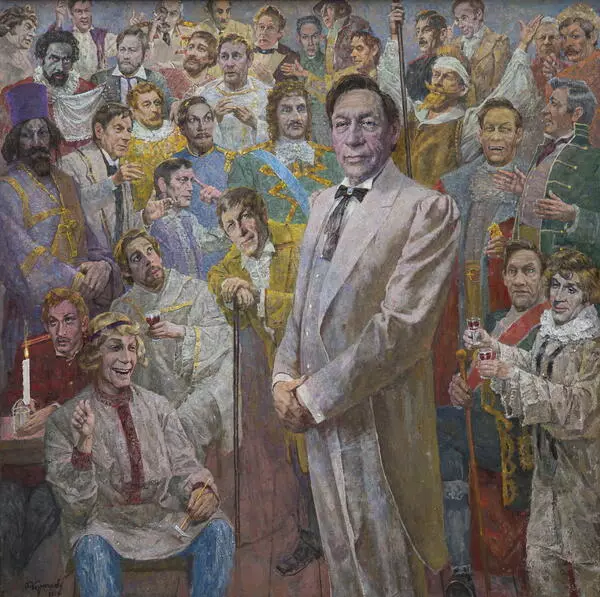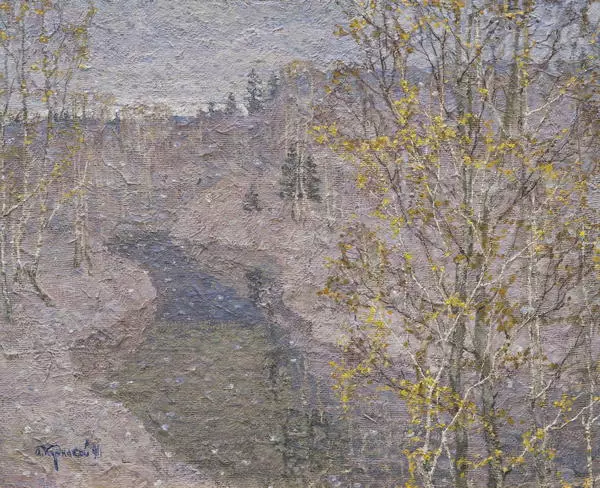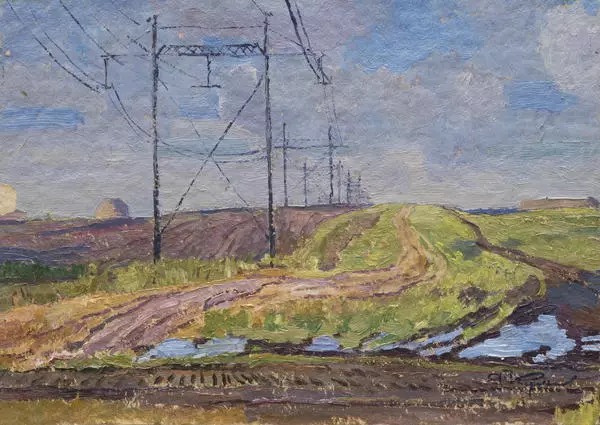The Italian city of Florence is replete with sights. One of the most popular tourist destinations is the Palazzo Vecchio and the square in front of it, which is lined with statues to enrich the panoramic view with allegories.
In his work, the Oryol artist Andrey Kurnakov depicted only two of those sculptures. The first is Michelangelo’s David. Giorgio Vasari, an Italian painter who became renowned for his book “Lives of the Most Excellent Painters, Sculptors, and Architects” which comprised biographies of Italian masters, mentioned the story of how the sculpture came to be. Michelangelo convinced his colleagues to give him a block of marble so damaged it was thought worthless and later used it to create one of his most famous masterpieces.
The five-meter statue of David was too big for the Cathedral of Santa Maria del Fiore, so instead, it was put in front of the entrance to the Palazzo Vecchio. The statue portrays the Biblical figure David focused on the upcoming fight with Goliath. He prepares for battle with a foe much stronger than him. David is calm and focused, but his muscles are tense. This is a classic example of contrapposto when the position of one part of the body seems to be juxtaposed with the other: although he is shown standing in a relaxed way, the hero is ready for a deadly move.
Another sculpture depicted by Kurnakov is “Hercules and Cacus” by Baccio Bandinelli. Cacus is a fire-breathing cannibal and the son of Hephaestus. He stole bulls and cows from Hercules and dragged them into his cave. After he had heard the lowing of the stolen cows, the hero found the giant’s hiding place and killed the thief.
Located in the center of Florence, “David” and “Hercules” began to be perceived as symbols of the city. They had stood there in the open for almost four centuries before they were replaced with their copies and transferred to the building of the Florence Academy of Fine Arts.
Kurnakov’s choice of the Palazzo Vecchio can be well explained — this location is considered a tribute to the great masters of the past. The artist wants to capture the flow of people gravitating toward the place of arts and its sights occupying a relatively small area in the old part of the city. Kurnakov’s Florence, depicted at the height of the tourist season, resembles a colored anthill.
This work is part of Kurnakov’s series titled “Travel Sketches”. He uses warm-colored watercolor paper and reddish-brown and soft green paints to convey both the grandeur and simplicity of the formidable walls; the bright sky, wet paving, and sculptures are painted with white gouache, while the human figures are outlined with a marker pen.
In his work, the Oryol artist Andrey Kurnakov depicted only two of those sculptures. The first is Michelangelo’s David. Giorgio Vasari, an Italian painter who became renowned for his book “Lives of the Most Excellent Painters, Sculptors, and Architects” which comprised biographies of Italian masters, mentioned the story of how the sculpture came to be. Michelangelo convinced his colleagues to give him a block of marble so damaged it was thought worthless and later used it to create one of his most famous masterpieces.
The five-meter statue of David was too big for the Cathedral of Santa Maria del Fiore, so instead, it was put in front of the entrance to the Palazzo Vecchio. The statue portrays the Biblical figure David focused on the upcoming fight with Goliath. He prepares for battle with a foe much stronger than him. David is calm and focused, but his muscles are tense. This is a classic example of contrapposto when the position of one part of the body seems to be juxtaposed with the other: although he is shown standing in a relaxed way, the hero is ready for a deadly move.
Another sculpture depicted by Kurnakov is “Hercules and Cacus” by Baccio Bandinelli. Cacus is a fire-breathing cannibal and the son of Hephaestus. He stole bulls and cows from Hercules and dragged them into his cave. After he had heard the lowing of the stolen cows, the hero found the giant’s hiding place and killed the thief.
Located in the center of Florence, “David” and “Hercules” began to be perceived as symbols of the city. They had stood there in the open for almost four centuries before they were replaced with their copies and transferred to the building of the Florence Academy of Fine Arts.
Kurnakov’s choice of the Palazzo Vecchio can be well explained — this location is considered a tribute to the great masters of the past. The artist wants to capture the flow of people gravitating toward the place of arts and its sights occupying a relatively small area in the old part of the city. Kurnakov’s Florence, depicted at the height of the tourist season, resembles a colored anthill.
This work is part of Kurnakov’s series titled “Travel Sketches”. He uses warm-colored watercolor paper and reddish-brown and soft green paints to convey both the grandeur and simplicity of the formidable walls; the bright sky, wet paving, and sculptures are painted with white gouache, while the human figures are outlined with a marker pen.
